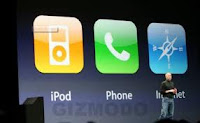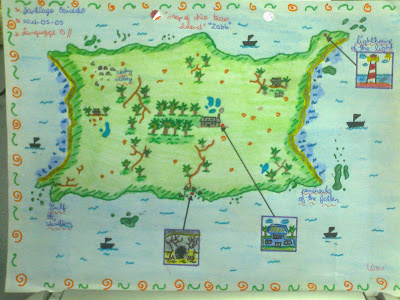The Rule of Three
The number Three seems to have a certain charm or exert a certain fascination in our culture. We make many things based on that number such as for example presenting a new idea just like Steve Jobs used to do when he was alive. Many of The things we like come in that number and thus it begs the question...Why Three precisely?
There are several examples of how we organize our concepts (the word concept is used here in a very broad aspect) always in groups of three:
Breakfast, Lunch, and Dinner (The three meals of the day)
Health, Money and Love (the "recipe for happiness")
Morning, Afternoon, Evening (the parts of the day)
Joseph, Mary and Jesus (the Holy Family according to Catholics)
The Father, the Son and the Holy Spirit (the aspects of God according to most, not all Christians)
The Devil, the Antichrist and the False Prophet (the Unholy Trinity)
The Father, the Son and the Holy Spirit (the aspects of God according to most, not all Christians)
The Devil, the Antichrist and the False Prophet (the Unholy Trinity)
Red, White and Blue (the colors of the U.S. flag)
The beginning, the middle and the end (the stages of any process)
Elementary school, Secondary school, University (levels of formal education)
Curly, Larry and Moe (the Three Stooges)
Phone, Internet and Cable (the standard pack of fun according to some companies)
Head, Trunk and Limbs (the parts of the body without being specific)
Literature in particular is full with examples of the Rule of Three. Three are the Fates (Clotho, Lachesis and Athropos), three the spirits that visit Scrooge in "A Christmas Carol" (the Ghost of Christmas Past, the Ghost of Christmas Present and the Ghost of Christmas Yet to Come), three the so-called Dracula's wives who torment Jonathan Harker at night, three the musketeers that help young D'Artagnan (Athos, Pothos and Aramis), three the Blind Mice, three the Little Pigs, three the Bears whose house Goldilocks breaks into.
There are of course more examples. some more evident than others but they are there if one keeps looking. And here are the words that perhaps make use of the Rule of Three in the most ingenious way, the ones said by Sir Winston Churchill back in 1942:
Elementary school, Secondary school, University (levels of formal education)
Curly, Larry and Moe (the Three Stooges)
Phone, Internet and Cable (the standard pack of fun according to some companies)
Head, Trunk and Limbs (the parts of the body without being specific)
Literature in particular is full with examples of the Rule of Three. Three are the Fates (Clotho, Lachesis and Athropos), three the spirits that visit Scrooge in "A Christmas Carol" (the Ghost of Christmas Past, the Ghost of Christmas Present and the Ghost of Christmas Yet to Come), three the so-called Dracula's wives who torment Jonathan Harker at night, three the musketeers that help young D'Artagnan (Athos, Pothos and Aramis), three the Blind Mice, three the Little Pigs, three the Bears whose house Goldilocks breaks into.
There are of course more examples. some more evident than others but they are there if one keeps looking. And here are the words that perhaps make use of the Rule of Three in the most ingenious way, the ones said by Sir Winston Churchill back in 1942:
"Now this is not the end. It is not even the beginning of the end. But it is, perhaps, the end of the beginning."




Comments